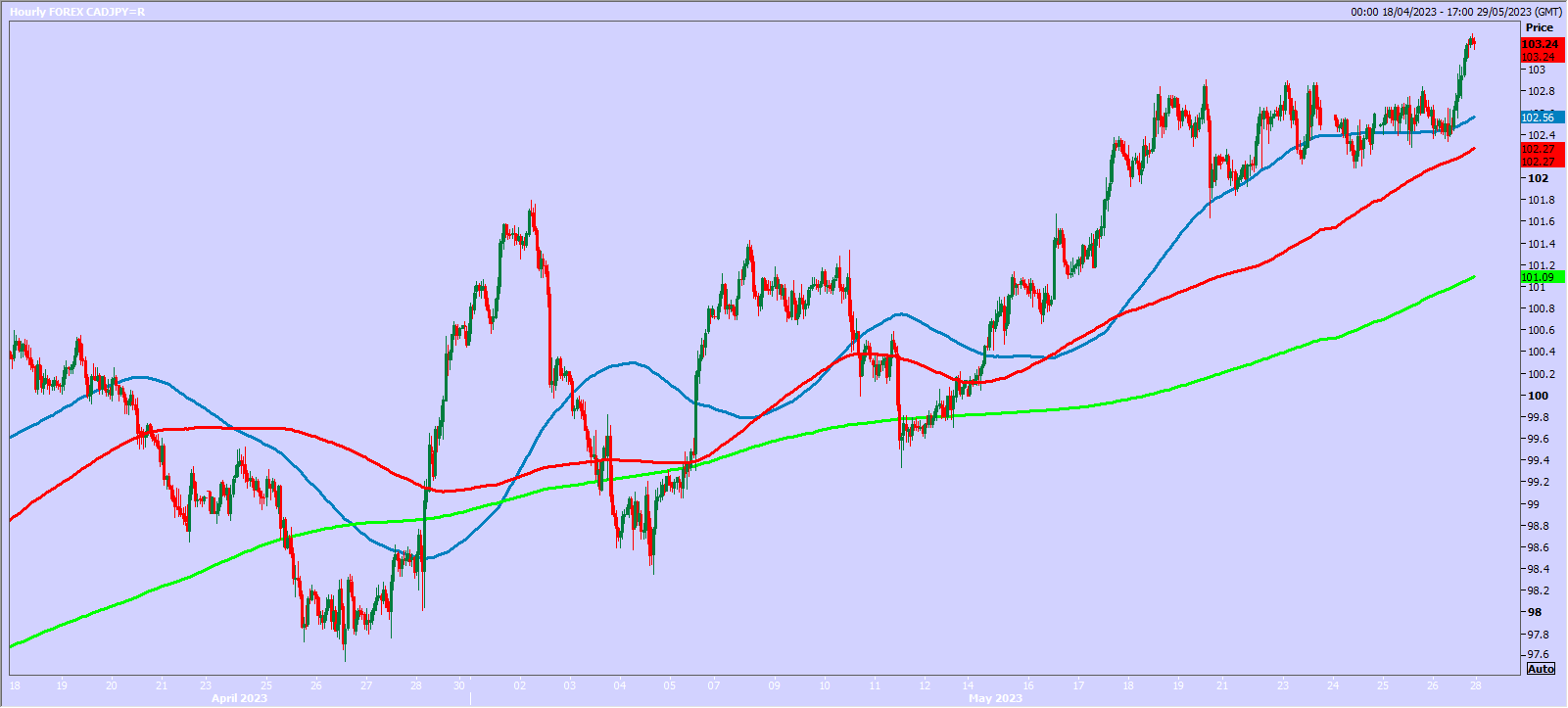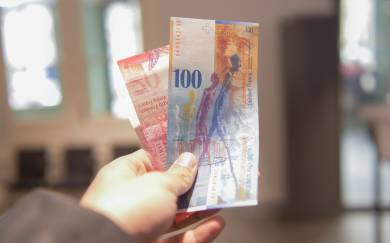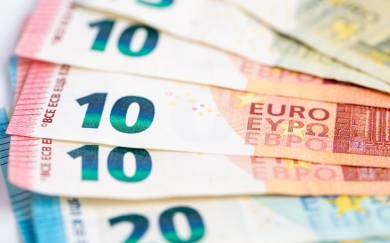Everyone Is Dissapointed In Euro (EUR). Japanese Officials Have To Face Discontests From Yields Rise

Marc Chandler 21.08.2022 23:14
For many, this will be the last week of the summer. However, in an unusual twist of the calendar, the US August employment report will be released on September 2, the end of the following week, rather than after the US Labor Day holiday (September 5).
The main economic report of the week ahead will be the preliminary estimate of the August PMI
The policy implications are not as obvious as they may seem. For example, in July, the eurozone composite PMI slipped below the 50 boom/bust level for the first time since February 2021. It was the third consecutive decline. Bloomberg's monthly survey of economists picked up a cut in Q3 GDP forecasts to 0.1% from 0.2% and a contraction of 0.2% in Q4 (previously 0.2% growth). Over the past week, the swaps market has moved from around 80% sure of a 50 bp hike next month to a nearly 20% chance it will lift the deposit rate by 75 bp.
The UK's composite PMI fell in three of the four months through July
However, at 52.1, it remains above the boom/bust level, though it is the weakest since February 2021. The Bank of England's latest forecasts are more pessimistic than the market. It projects the economy will contract by 1.5% next year and another 0.3% in 2024. It has CPI peaking later this year at around 13% before falling to 5.5% in 2023 and 1.5% in 2024. Market expectations have turned more hawkish for the BOE too. A week ago, the swap market was pricing in a nearly 90% chance of another 50 bp hike. After the CPI jump reported in the middle of last week, the market fully priced in the 50 bp move and a nearly 30% chance of a 75 bp hike.
Japanese officials have successfully turned back market pressure that had driven the benchmark three-month implied volatility to 14% in mid-June, more than twice as high as it was at the start of the year
It slipped below 10% in recent days. The BOJ was forced to vigorously defend its 0.25% cap on the 10-year bond. It has spent the better part of the past three weeks below 0.20%. The BOJ has not had to spend a single yen on its defense since the end of June. However, with the jump in global yields (US 10-year yield rose 20 bp last week, the German Bund 33 bp, and the 10-year UK Gilt nearly 40 bp) and the weakness of the yen, the BOJ is likely to be challenged again.
The economy remains challenging
The composite PMI fell to 50.2 in July from 53.2 in June. It is the weakest reading since February. It has averaged 50.4 through July this year. The average for the first seven months last year was 49.0. The government is working on some support measures aimed at extending the efforts to cushion the blow of higher energy and food prices. Japan's Q2 GDP deflator was minus 0.4%, which was half of the median forecast in Bloomberg's survey, but it shows the tough bind of policy. Consider that the July CPI rose to 2.6%, and the core measure, which the BOJ targets, excludes fresh food, rose to 2.4% from 2.2%. The target is 2%, and it was the third month above it. Tokyo will report its August CPI figures at the end of the week.
Australia's flash PMI may be more influential as the futures market is nearly evenly split between a 25 bp hike and a 50 bp move at the September 6 central bank meeting
The minutes from the RBA's meeting earlier this month underscored its data dependency. However, this is about the pace of the move. The target rate is currently at 1.85%, and the futures market is near 3.15% for the end of the year, well beyond the 2.5% that the central bank sees as neutral. The weakness of China's economy may dent the positive terms-of-trade shock. The Melbourne Institute measure of consumer inflation expectations fell in August for the second month but at 5.9%, is still too high.
Through the statistical quirkiness of GDP-math, the US economy contracted in the first two quarters of the year
A larger trade deficit did not help, but the real problem was inventories. In fairness, more of the nominal growth resulted from higher prices than economists expected rather than underlying activity. Still, it does appear that the US economy is expanding this quarter, and the high-frequency data will help investors and economists assess the magnitude. While surveys are helpful, the upcoming real sector data include durable goods orders (and shipments, which feed into GDP models), July personal income and consumption figures, the July goods trade balance, and wholesale and retail inventories.
Consumption still drives more than 2/3 of the economy, and like retail sales, personal consumption expenditures are reported in nominal terms, which means that they are inflated by rising prices
However, the PCE deflator is expected to slow dramatically. After jumping 1% in June, the headline deflator is expected to increase by 0.1%. This will allow the year-over-year rate to slow slightly (~6.5% from 6.8%). The core deflator is forecast (median, Bloomberg's survey) to rise by 0.4%, which given the base effect, could see the smallest of declines in the year-over-year rate that stood at 4.8% in June. Given the Fed's revealed preferences when it cited the CPI rise in the decision in June to hike by 75 bp instead of 50 bp, the CPI has stolen the PCE deflator's thunder, even though the Fed targets the PCE deflator. Real consumption was flat in Q2, and Q3 is likely to have begun on firmer footing.
The softer than expected CPI, PPI, and import/export prices spurred the market into downgrading the chances of a 75 bp hike by the Fed next month
After the stronger than expected jobs growth, the Fed funds futures priced in a little better than a 75% chance of a 75 bp hike. It has been mostly hovering in the 40%-45% range most of last week but finished near 55%. It is becoming a habit for the market to read the Fed dovishly even though it is engaged in a more aggressive course than the markets anticipated. This market bias warns of the risk of a market reversal after Powell speaks on August 26.
At the end of last year, the Fed funds futures anticipated a target rate of about 0.80% at the end of this year. Now it says 3.50%. The pace of quantitative tightening is more than expected and will double starting next month. There is also the tightening provided by the dollar's appreciation. For example, at the end of 2021, the median forecast in Bloomberg's survey saw the euro finishing this year at $1.15. Now the median sees the euro at $1.04 at the end of December. And even this may prove too high.
The FOMC minutes from last month's meeting recognized two risks. The first was that the Fed would tighten too much. Monetary policy impacts with a lag, which also acknowledges that soft-landing is difficult to achieve. The market initially focused on this risk as is its wont. However, the Fed also recognized the risk of inflation becoming entrenched and characterized this risk as "significant." The Jackson Hole confab (August 25-27) will allow the Fed to help steer investors and businesses between Scylla and Charybdis.
Critics jumped all over Fed Chair Powell's claim that the Fed funds target is now in the area the officials regard as neutral. This was not a forecast by the Chair, but merely a description of the long-term target rate understood as neither stimulating nor restricting the economy. In June, all but three Fed officials saw the long-term rate between 2.25% and 2.50%. To put that in perspective, recall that in December 2019, the median view of the long-term target was 2.50%. Eleven of the 18 Fed officials put their "dot" between 2.25% and 2.50%. The FOMC minutes were clear that a restrictive stance is necessary, and the Fed clearly signaled additional rate hikes are required. The discussions at Jackson Hole may clarify what the neutral rate means.
Barring a significant downside surprise, we expect the Fed will deliver its third consecutive 75 bp increase next month. The strength and breadth of the jobs growth while price pressures remain too high and financial conditions have eased encourages the Fed to move as fast as the market allows. However, before it meets, several important high-frequency data points will be revealed, including a few employment measures, the August nonfarm payroll report, and CPI.
The market is also having second thoughts about a rate cut next year
At the end of July, the implied yield of the December 2023 Fed funds futures was 50 bp below the implied yield of the December 2022 contract. It settled last week at near an 8 bp discount. This reflects a growing belief that the Fed will hike rates in Q1 23. The March 2023 contract's implied yield has risen from less than five basis points more than the December 2022 contract to more than 20 bp above it at the end of last week.
Let's turn to the individual currency pairs, put last week's price action into the larger context, and assess the dollar's technical condition
We correctly anticipated the end of the dollar's pullback that began in mid-July, but the power for the bounce surprises. Key technical levels have been surpassed, warning that the greenback will likely retest the July highs.
Dollar Index: DXY surged by more than 2.3% last week, its biggest weekly advance since March 2020. The momentum indicators are constructive and not over-extended. However, it closed well above the upper Bollinger Band (two standard deviations above the 20-day moving average), found near 107.70. Little stands in the way of a test on the mid-July high set around 109.30. Above there, the 110-111.30 area beckons. While the 107.50 area may offer some support now, a stronger floor may be found closer to 107.00.
Euro: The euro was turned back from the $1.0365-70 area on August 10-11 and put in a low near $1.0030 ahead of the weekend. The five-day moving average slipped below the 20-day moving average for the first time in around 3.5 weeks. The MACD is trending lower, while the Slow Stochastic did not confirm the recent high, leaving a bearish divergence in its wake. The only caution comes from the euro's push through the lower Bollinger Band (~$1.0070). Initially, parity may hold, but the risk is a retest on the mid-July $0.9950 low. A convincing break could target the $0.96-$0.97 area. As the euro has retreated, the US two-year premium over Germany has trended lower. It has fallen more than 30 bp since peaking on August 5. We find that the rate differential often peaks before the dollar.
Japanese Yen: The dollar will begin the new week with a four-day advance against the yen in tow. It has surpassed the (61.8%) retracement objective of the pullback since the mid-July high (~JPY139.40) found near JPY136.00. The momentum indicators are constructive, and the five-day moving average has crossed above the 20-day for the first time since late July. It tested the lower band of the next resistance bans seen in the JPY137.25-50 area at the end of last week. But it appears poised to re-challenge the highs. As volatility increases and yields rise, Japanese officials return to their first line of defense: verbal intervention.
British Pound: Sterling took out the neckline of a possible double top we have been monitoring that came in at $1.20. It projects toward the two-year lows set in mid-July near $1.1760, dipping below $1.18 ahead of the weekend. As one would expect, the momentum indicators are headed lower, and the five-day moving average has fallen below the 20-day moving average for the first time in four weeks. It has closed below its lower Bollinger Band (~$1.1910) in the last two sessions. A convincing break of the $1.1760 low clears the way to the March 2020 low, about 3.5-cents lower. Initial resistance is now seen around $1.1860 and, if paid, could signal scope for another 3/4 to a full-cent squeeze.
Canadian Dollar: The Canadian dollar was no match for the greenback, which moved above CAD1.30 ahead of the weekend for the first time in a month. The momentum indicators suggest the US dollar has more scope to advance, and the next target is the CAD1.3035 area. Above there, the CAD1.3100-35 band is next. The high since November 2020 was recorded in the middle of July around CAD1.3225. After whipsawing in Q1, the five- and 20-day moving averages have caught the big moves. The shorter average crossed above the longer moving average last week for the first time since July 21. Initial support will likely be encountered near CAD1.2935.
Australian Dollar: The Aussie was sold every day last week. It is the first time in a year, and its 3.4% drop is the largest since September 2020. The rally from the mid-July low (~$0.6680) to the recent high (~$0.7135) looks corrective in nature. Before the weekend, it tested the rally's (61.8%) retracement objective. The momentum indicators are falling, and the Slow Stochastic did not confirm this month's high, creating a bearish divergence. A break of the $0.6850-60 area may signal follow-through selling into the $0.6790-$0.6800 band, but a retest on the July low is looking increasingly likely. Initial resistance is now seen near $0.6920.
Mexican Peso: The peso's four-day slide ended a six-day run. The peso lost about 1.6% last week, slightly better than the 2.25% slide of the JP Morgan Emerging Market Currency Index. This month, the US dollar peaked around MXN20.8335 and proceeded to fall and forged a base near MXN19.81. It has met the (38.2%) retracement objective around MXN20.20 before the weekend. The next (50%) retracement is near MXN20.3230. The 200-day moving average is closer to MXN20.41. The dollar is probing the 20-day moving average seen a little below MXN20.24. The momentum indicators have only just turned up for the greenback. We suspect there may be potential to around MXN20.50 in the coming days.
Chinese Yuan: The yuan was tagged with more than a 1% loss against the dollar last week, its biggest decline in three months. A combination of poor Chinese data, its small rate cut, and a resurgent US dollar spurred the exchange rate adjustment. At the end of July, China's 10-year yield was about 11 bp on top of the US. However, it switched to a discount after the US jobs data (August 5), and the discount grew every day last week, reaching 35 bp, the most since late June. After gapping higher before the weekend, the greenback reached nearly CNY6.8190, its highest level since September 2020. The next target is around CNY6.85, but given the divergence of policy, a move back toward CNY7.00, last seen in July 2020, maybe a reasonable medium-term target. The PBOC's dollar fix ahead of the weekend showed no protest of the weaker exchange rate.
Disclaimer
Source: Flash PMI, Jackson Hole, and the Price Action


 ING Economics 18.05.2022 08:58
ING Economics 18.05.2022 08:58

 Matthew Ryan 23.05.2022 15:20
Matthew Ryan 23.05.2022 15:20








